Abstract
1 The plasma protein binding of theophylline was determined after addition of [14C]-theophylline (15 micrograms/ml) to plasma from 24 healthy drug-free volunteers and equilibrium dialysis for 2 h at 37 degrees C. 2 The percentage of drug unbound was 60.0% +/- 2.2% (s.d.) with very little variation between individuals. The binding ratio of theophylline was not significantly related to the plasma albumin or alpha 1-acid glycoprotein (AAG) concentrations but was significantly, although weakly, negatively related to the logarithm of the non-esterified fatty acid concentration (NEFA) (r = 0.443, P less than 0.05). 3 Intravenous administration of heparin (1000 units) caused a significant rise in plasma NEFA concentration and in the percentage of drug unbound in plasma after equilibrium dialysis. 4 In human serum albumin solutions, the binding ratio of theophylline was significantly related to the albumin concentration and at the albumin concentration seen in the 24 normal subjects, the percentage of drug unbound was almost identical. Addition of AAG in physiological concentrations did not enhance theophylline binding but oleic acid, and to a lesser extent palmitic acid, reduced binding significantly. 5 The percentage of theophylline unbound in plasma varied markedly with pH so that at pH7 the percentage unbound was 52% greater than at pH 8. There was no evidence of concentration dependence of binding up to 140 micrograms/ml theophylline. 6 Theophylline appears to bind almost exclusively to albumin and its plasma protein binding varies little in healthy subjects, showing no concentration-dependence over the therapeutic range of concentrations. The binding is affected by pH and by NEFA concentration, however, and these factors may be of greater importance in disease states. Caution should be employed in the use of heparin in studies of plasma protein binding of theophylline.
Full text
PDF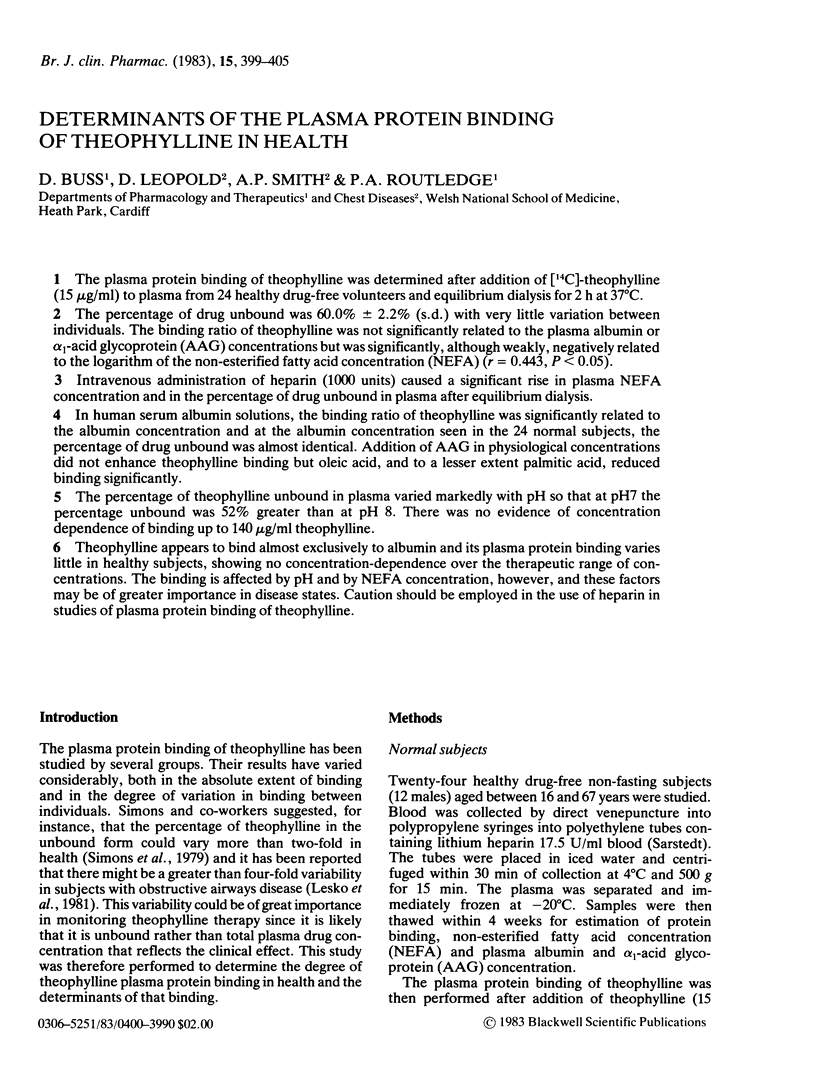
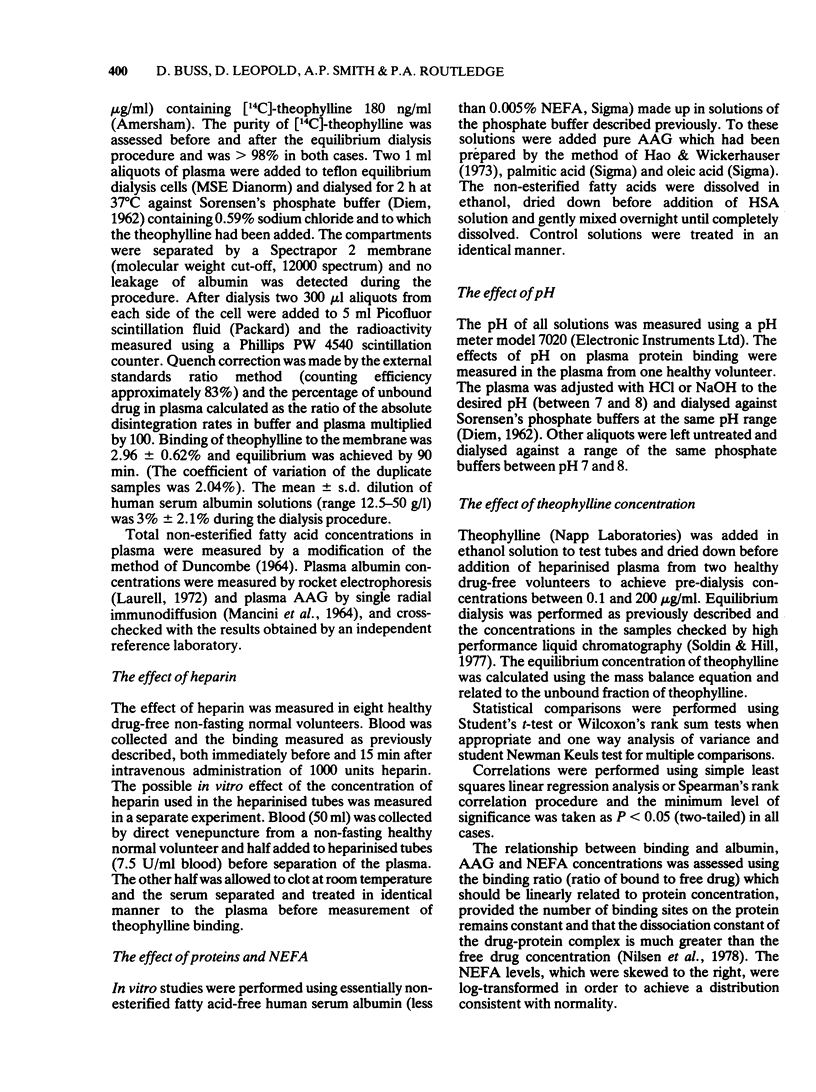
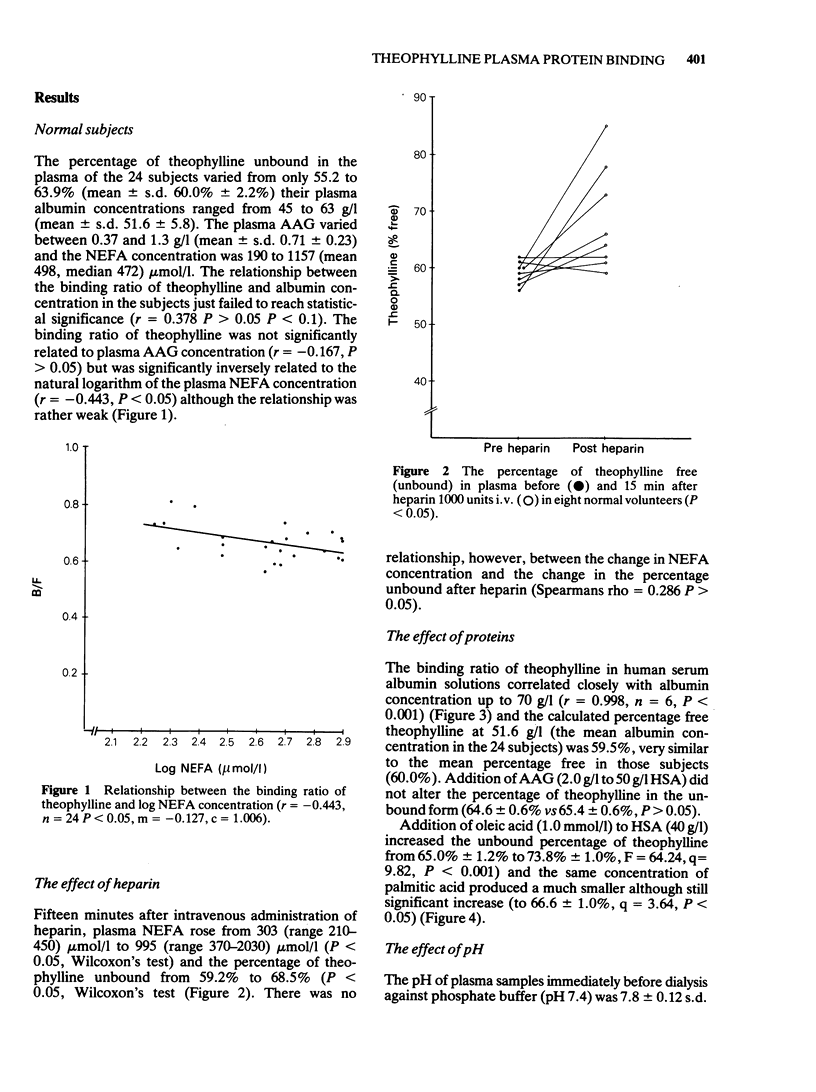
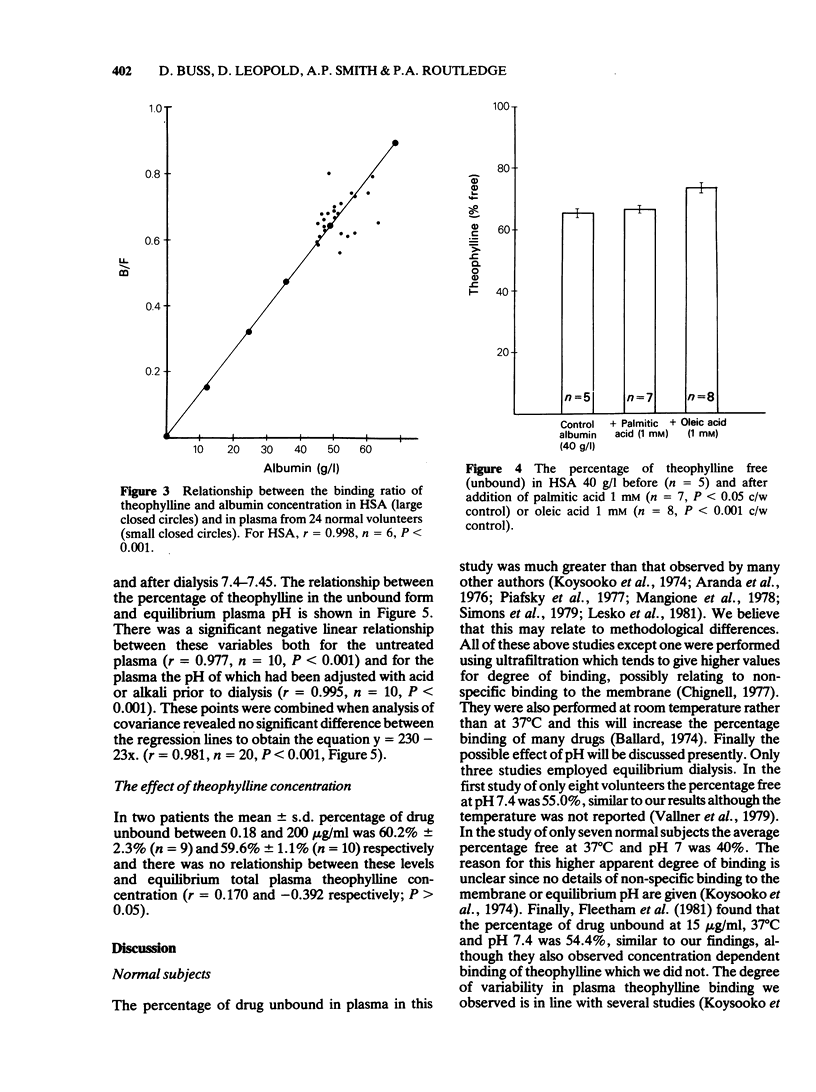
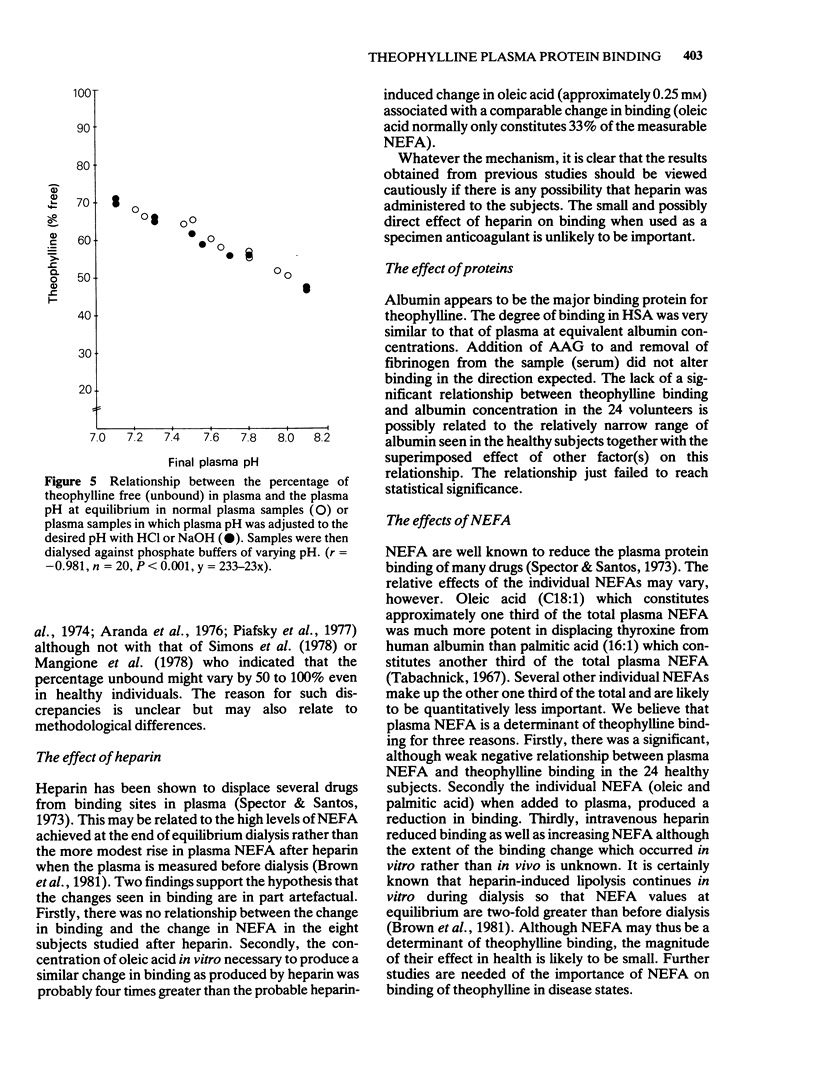
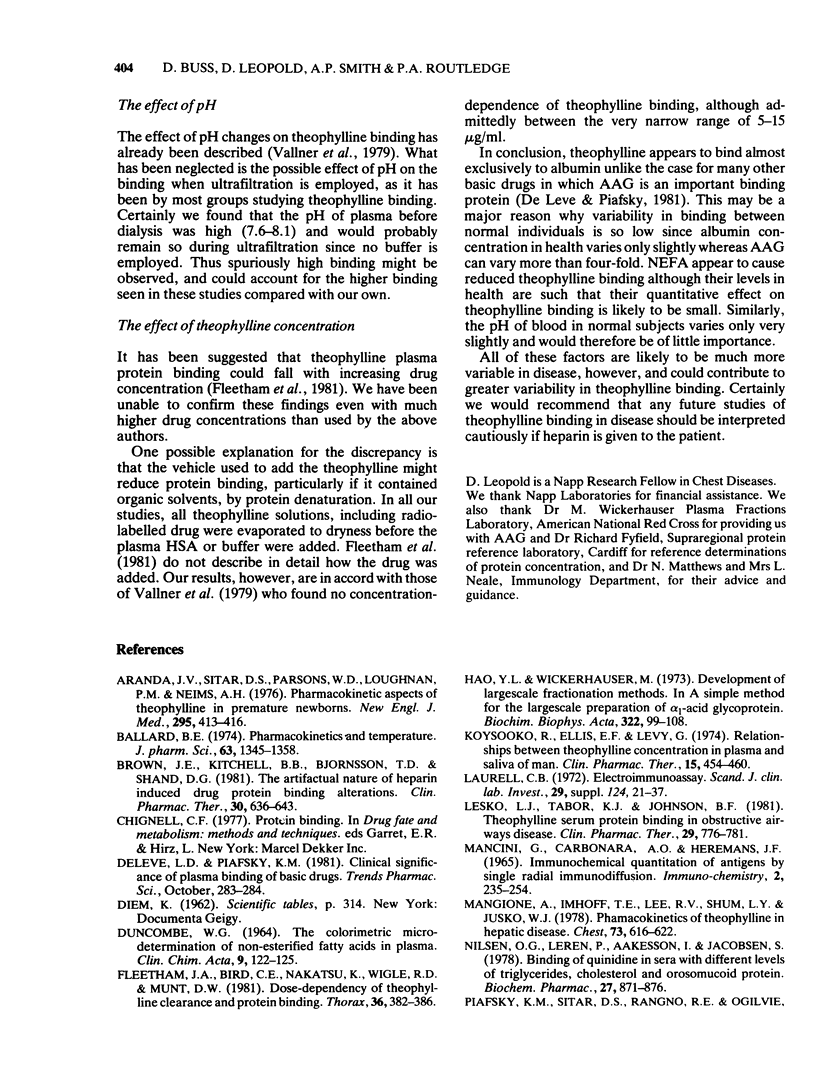
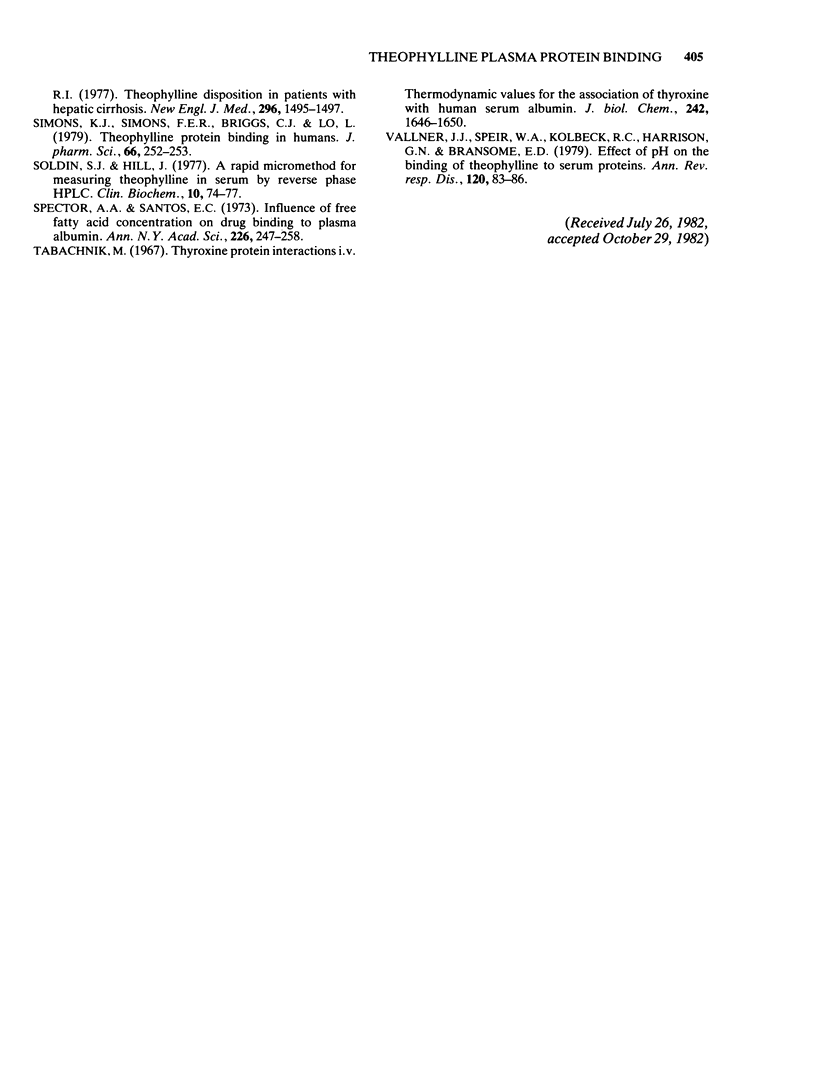
Selected References
These references are in PubMed. This may not be the complete list of references from this article.
- Aranda J. V., Sitar D. S., Parsons W. D., Loughnan P. M., Neims A. H. Pharmacokinetic aspects of theophylline in premature newborns. N Engl J Med. 1976 Aug 19;295(8):413–416. doi: 10.1056/NEJM197608192950803. [DOI] [PubMed] [Google Scholar]
- Ballard B. E. Pharmacokinetics and temperature. J Pharm Sci. 1974 Sep;63(9):1345–1358. doi: 10.1002/jps.2600630903. [DOI] [PubMed] [Google Scholar]
- Brown J. E., Kitchell B. B., Bjornsson T. D., Shand D. G. The artifactual nature of heparin-induced drug protein-binding alterations. Clin Pharmacol Ther. 1981 Nov;30(5):636–643. doi: 10.1038/clpt.1981.215. [DOI] [PubMed] [Google Scholar]
- DUNCOMBE W. G. THE COLORIMETRIC MICRO-DETERMINATION OF NON-ESTERIFIED FATTY ACIDS IN PLASMA. Clin Chim Acta. 1964 Feb;9:122–125. doi: 10.1016/0009-8981(64)90004-x. [DOI] [PubMed] [Google Scholar]
- Fleetham J. A., Bird C. E., Nakatsu K., Wigle R. D., Munt P. W. Dose-dependency of theophylline clearance and protein binding. Thorax. 1981 May;36(5):382–386. doi: 10.1136/thx.36.5.382. [DOI] [PMC free article] [PubMed] [Google Scholar]
- Hao Y. L., Wickerhauser M. Development of large-scale fractionation methods. IV. A simple method for the large-scale preparation of alpha1-acid glycoprotein. Biochim Biophys Acta. 1973 Sep 21;322(1):99–108. doi: 10.1016/0005-2795(73)90180-3. [DOI] [PubMed] [Google Scholar]
- Koysooko R., Ellis E. F., Levy G. Relationship between theophylline concentration in plasma and saliva of man. Clin Pharmacol Ther. 1974 May;15(5):454–460. doi: 10.1002/cpt1974155454. [DOI] [PubMed] [Google Scholar]
- Laurell C. B. Electroimmuno assay. Scand J Clin Lab Invest Suppl. 1972;124:21–37. doi: 10.3109/00365517209102748. [DOI] [PubMed] [Google Scholar]
- Lesko L. J., Tabor K. J., Johnson B. F. Theophylline serum protein binding in obstructive airways disease. Clin Pharmacol Ther. 1981 Jun;29(6):776–781. doi: 10.1038/clpt.1981.110. [DOI] [PubMed] [Google Scholar]
- Mancini G., Carbonara A. O., Heremans J. F. Immunochemical quantitation of antigens by single radial immunodiffusion. Immunochemistry. 1965 Sep;2(3):235–254. doi: 10.1016/0019-2791(65)90004-2. [DOI] [PubMed] [Google Scholar]
- Mangione A., Imhoff T. E., Lee R. V., Shum L. Y., Jusko W. J. Pharmacokinetics of theophylline in hepatic disease. Chest. 1978 May;73(5):616–622. doi: 10.1378/chest.73.5.616. [DOI] [PubMed] [Google Scholar]
- Nilsen O. G., Leren P., Aakesson I., Jacobsen S. Binding of quinidine in sera with different levels of triglycerides, cholesterol, and orosomucoid protein. Biochem Pharmacol. 1978 Mar 15;27(6):871–876. doi: 10.1016/0006-2952(78)90411-2. [DOI] [PubMed] [Google Scholar]
- Simons K. J., Simons F. E., Briggs C. J., Lo L. Theophylline protein binding in humans. J Pharm Sci. 1979 Feb;68(2):252–253. doi: 10.1002/jps.2600680238. [DOI] [PubMed] [Google Scholar]
- Soldin S. J., Hill J. G. A rapid micromethod for measuring theophylline in serum by reverse-phase high-performance liquid chromatography. Clin Biochem. 1977 Apr;10(2):74–77. doi: 10.1016/s0009-9120(77)90928-6. [DOI] [PubMed] [Google Scholar]
- Spector A. A., Santos E. C., Ashbrook J. D., Fletcher J. E. Influence of free fatty acid concentration on drug binding to plasma albumin. Ann N Y Acad Sci. 1973 Nov 26;226:247–258. doi: 10.1111/j.1749-6632.1973.tb20486.x. [DOI] [PubMed] [Google Scholar]
- Tabachnick M. Thyroxine-protein interactions. IV. Thermodynamic values for the association of thyroxine with human serum albumin. J Biol Chem. 1967 Apr 10;242(7):1646–1650. [PubMed] [Google Scholar]
- Vallner J. J., Speir W. A., Jr, Kolbeck R. C., Harrison G. N., Bransome E. D., Jr Effect of pH on the binding of theophylline to serum proteins. Am Rev Respir Dis. 1979 Jul;120(1):83–86. doi: 10.1164/arrd.1979.120.1.83. [DOI] [PubMed] [Google Scholar]


